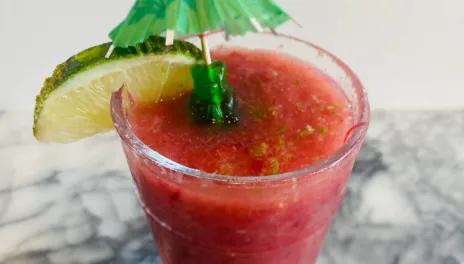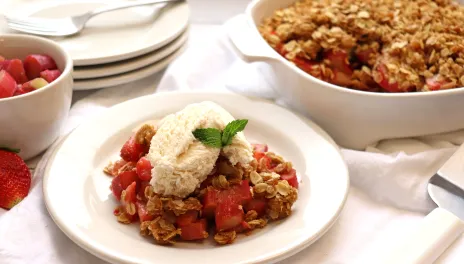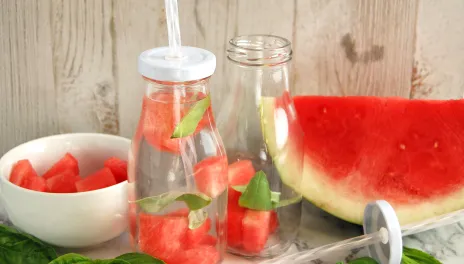Rhubarb Slush
If you aren't a rhubarb fan, you might become one after trying this refreshing slush!
Ingredients
- 3 cups fresh or frozen rhubarb, chopped
- ⅓ cup sugar
- 1 cup water
- 1 cup apple juice
- ¾ cup pink lemonade concentrate, thawed
- 2 quarts lemon-lime sparkling water
Directions
In a saucepan, combine rhubarb, water and sugar; bring to a boil. Reduce heat; cover and simmer for five minutes or until rhubarb is tender. Cool for about 30 minutes.
In a food processor or blender, puree mixture. Stir in apple juice and lemonade concentrate. Pour into a container; cover and freeze until firm. Let stand at room temperature for about 45 minutes (or until soft enough to scoop).
For individual servings, scoop ⅓ cup into a glass and fill with sparkling water. To serve a group, place all of mixture in a large pitcher or punch bowl; add sparkling water and stir. Serve immediately.



